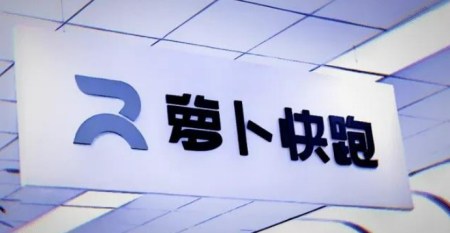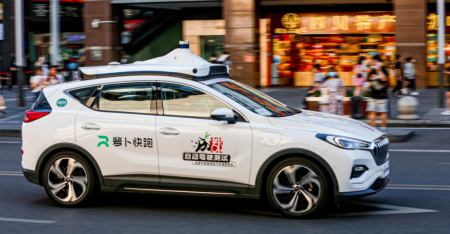【Carbon Industry News】Impact of Autonomous Vehicles on Traditional Taxis and Ride-Hailing Services

【Carbon Industry News】 Impact of Autonomous Vehicles on Traditional Taxis and Ride-Hailing Services
Autonomy on the Rise: The Case of "Luobo Kuaipao"
Recent discussions about "Luobo Kuaipao," frequently trending on social media, highlight the profound impact of autonomous vehicles on traditional taxi and ride-hailing services. This surge in interest brings to the forefront critical questions about the future of autonomous driving: Can autonomous vehicles truly replace human-driven cars? How can the safety of autonomous vehicles be ensured? These topics have garnered significant online attention.
In Wuhan, "Luobo Kuaipao" mainly operates using the fifth-generation Apollo vehicles from Baidu, each costing a hefty 480,000 yuan. With an operational lifespan of 8 years for ride-hailing vehicles, the daily depreciation cost per vehicle stands at about 160 yuan. Additionally, operational costs include safety personnel wages, electricity, and routine maintenance, pushing the total daily cost beyond 370 yuan. Currently, "Luobo Kuaipao" relies on subsidies to attract users. To achieve sustainable development, the company needs to improve service quality while further reducing operating costs.

Cost Reduction from Fifth to Sixth Generation
Baidu’s newly launched sixth-generation Apollo intelligent system for "Luobo Kuaipao" reduces the vehicle cost by 60%, with a price tag of approximately 204,600 yuan. "Luobo Kuaipao" plans to cover the entire Wuhan area in 2024, deploying 1,000 sixth-generation autonomous vehicles.
The significant cost reduction from the fifth to the sixth generation is achieved through several measures. Apart from the high cost of the autonomous driving system—where top lidars cost about 80,000 yuan and sector lidars between 10,000-20,000 yuan—advancements in lidar technology could reduce costs to 8,000 yuan or less in the future. Vehicle controllers and chips, previously using Nvidia's truck chips costing tens of thousands of yuan, may shift to edge computing chips costing around 20,000 yuan. Other sensors, including high-wave radar, ultrasonic radar, and cameras, cost about 30,000-40,000 yuan.
Innovations in Battery Technology
To cut costs further, innovations in battery technology play a crucial role. According to the Ministry of Industry and Information Technology's 381st batch of vehicle announcements, the new model is manufactured by Jiangling Group New Energy Automobile Co., Ltd., under the "Yi Chi" brand. It features a "battery-swapping pure electric multi-purpose passenger vehicle" design, measuring 4765 x 1885 x 1715mm with a 2830mm wheelbase. Equipped with a 110kW motor from BYD Fudi Power and a lithium iron phosphate battery from SVOLT Energy, the vehicle supports battery swapping. It has a range of 380 km, and with fully automated quick battery swapping, range anxiety is minimized. The entire battery swap process, usually completed within five minutes, is unmanned. With direct battery swaps, the time could be reduced to three minutes, depending on the day's mileage, ensuring no impact on order volume. Wide demand for graphitized petroleum coke as carburant of lithium battery anode materials.
The battery employs SVOLT Energy's L600 147Ah lithium iron phosphate short blade battery, known for its high safety and cost advantages. The short blade and stacking design have passed various national safety performance tests, including overcharging, impact, and vibration. Autonomous driving vehicles demand higher safety and durability standards for their batteries.

The Future of Autonomous Driving and Electric Vehicles
In recent years, the rapid penetration of new energy vehicles (NEVs) has been closely linked to the growth of the ride-hailing industry. NEVs, with their low electricity costs and lower per-kilometer expenses, offer higher profits for drivers compared to fuel cars, making them increasingly popular. However, as we step into the era of autonomous driving, it's clear that electric propulsion remains the preferred choice, driving new demand in the lithium battery market. Most companies will continue to opt for lithium iron phosphate batteries due to their low cost and high safety, and recent advancements in battery range further bolster their use. As autonomous driving technology matures and sees widespread adoption in more cities, the related industries within the supply chain will flourish. This growth will introduce new opportunities in the lithium battery market, ensuring continued innovation and expansion.
Feel free to reach out to us at any time for more information regarding the lithium battery anode materials market. Our team is dedicated to providing you with in-depth insights and tailored assistance based on your needs. Whether you have questions about product specifications, market trends, or pricing, we are here to assist you with the utmost dedication.
No related results found








0 Replies